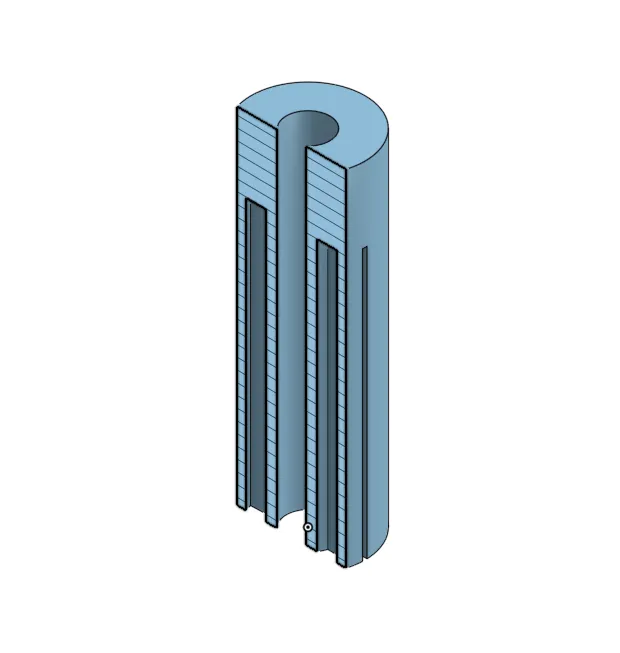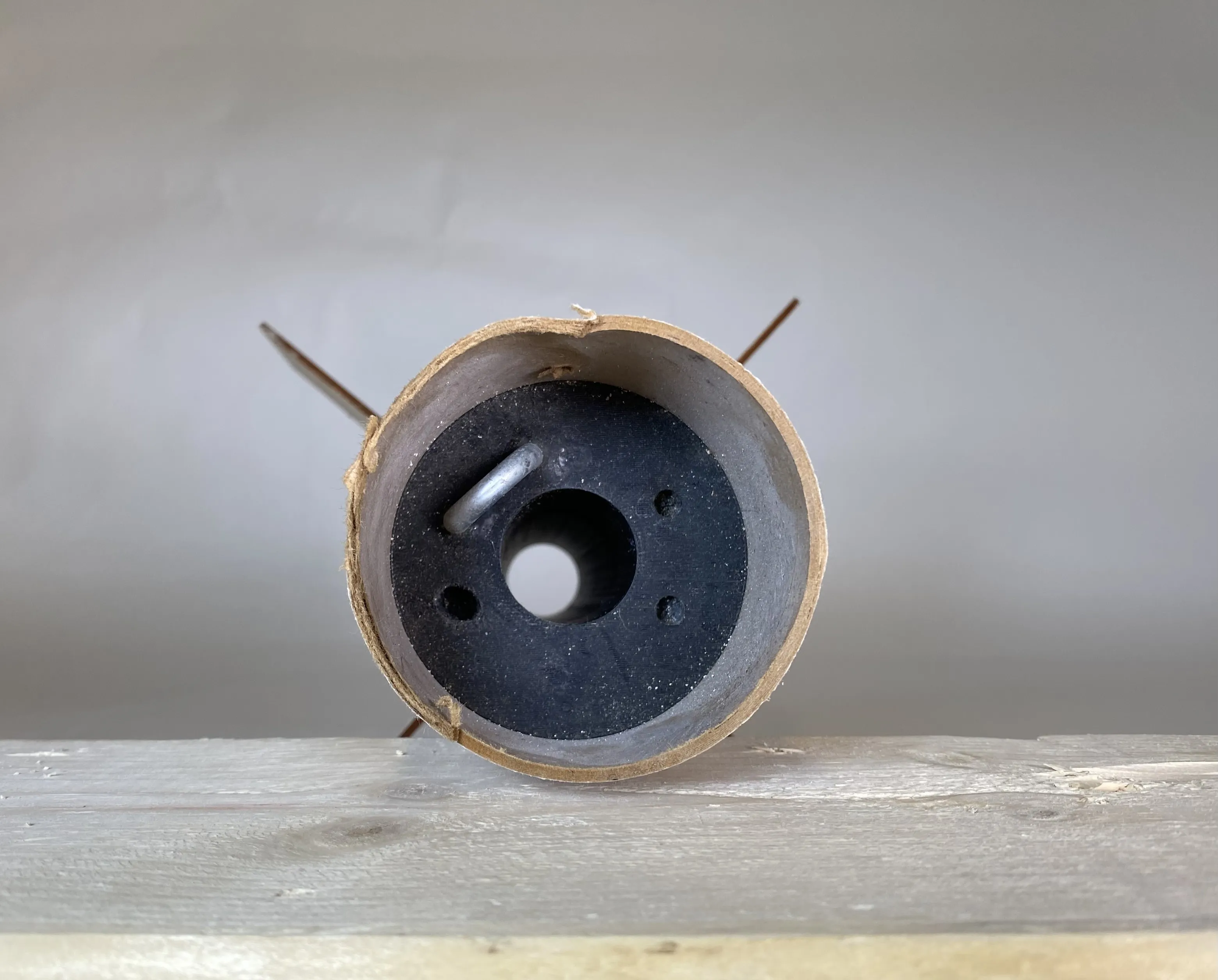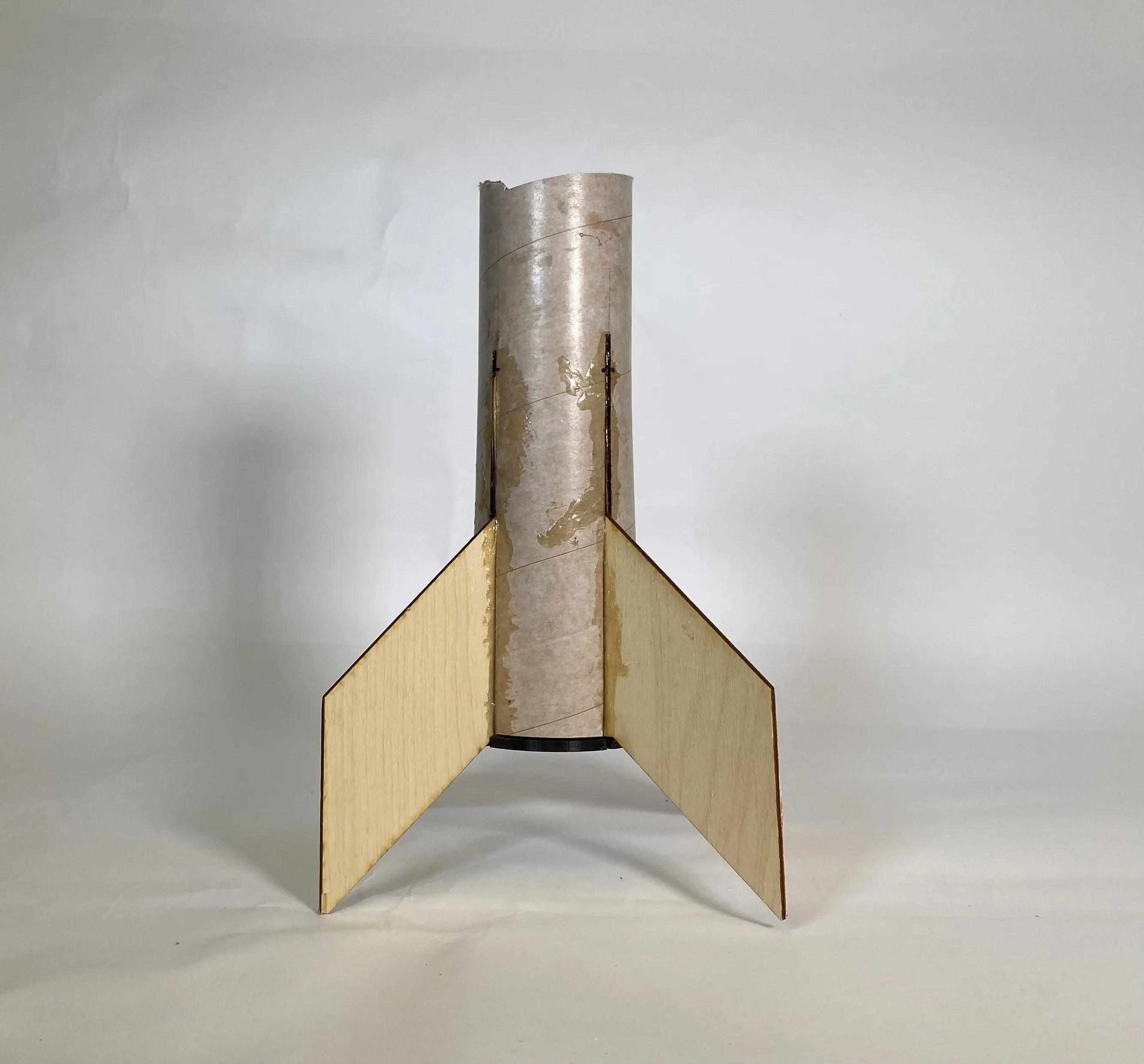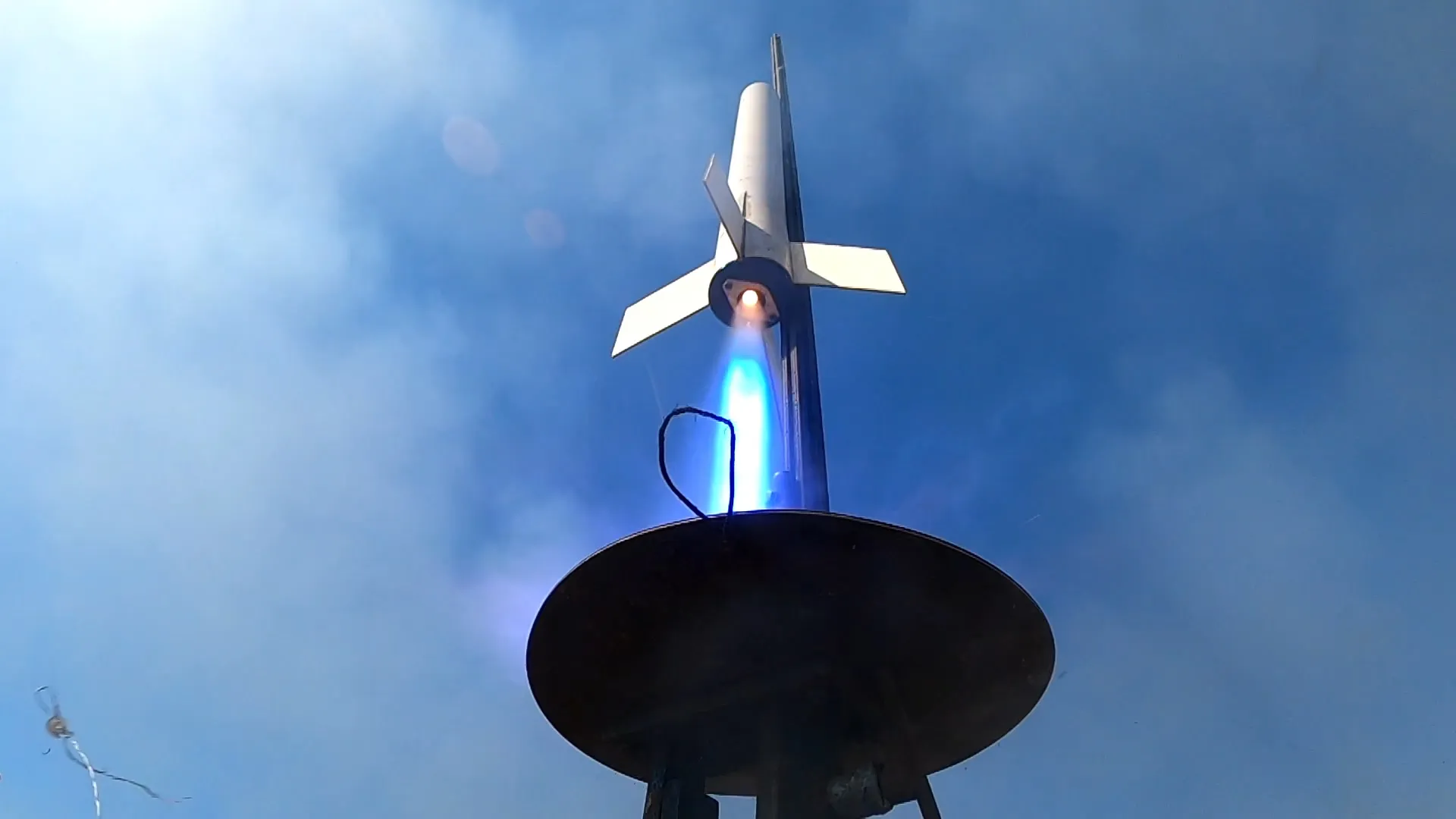L1 Certification Launch
Last updated December 24, 2023
As a member of the Tufts SEDS Rocketry team, I undertook the construction of a high-powered rocket for my NAR
L1 certification. In addition to fulfilling the certification requirements, I aimed to explore the use of a
3D-printed ABS motor mount that also served as the fin assembly. My objective was to assess the
in-flight and
post-flight reliability of the motor mount and its ability to withstand potential warping or material
alterations caused by the rocket motor.
3D-printed Motor Mount
The 3D-printed motor mount offered a convenient alternative to traditional rocket designs, which typically
involve separate components such as centering rings, an engine block, and ejection charge protection. In
contrast, the 3D-printed motor mount eliminated the need for these individual elements, simplifying the
overall
assembly process.
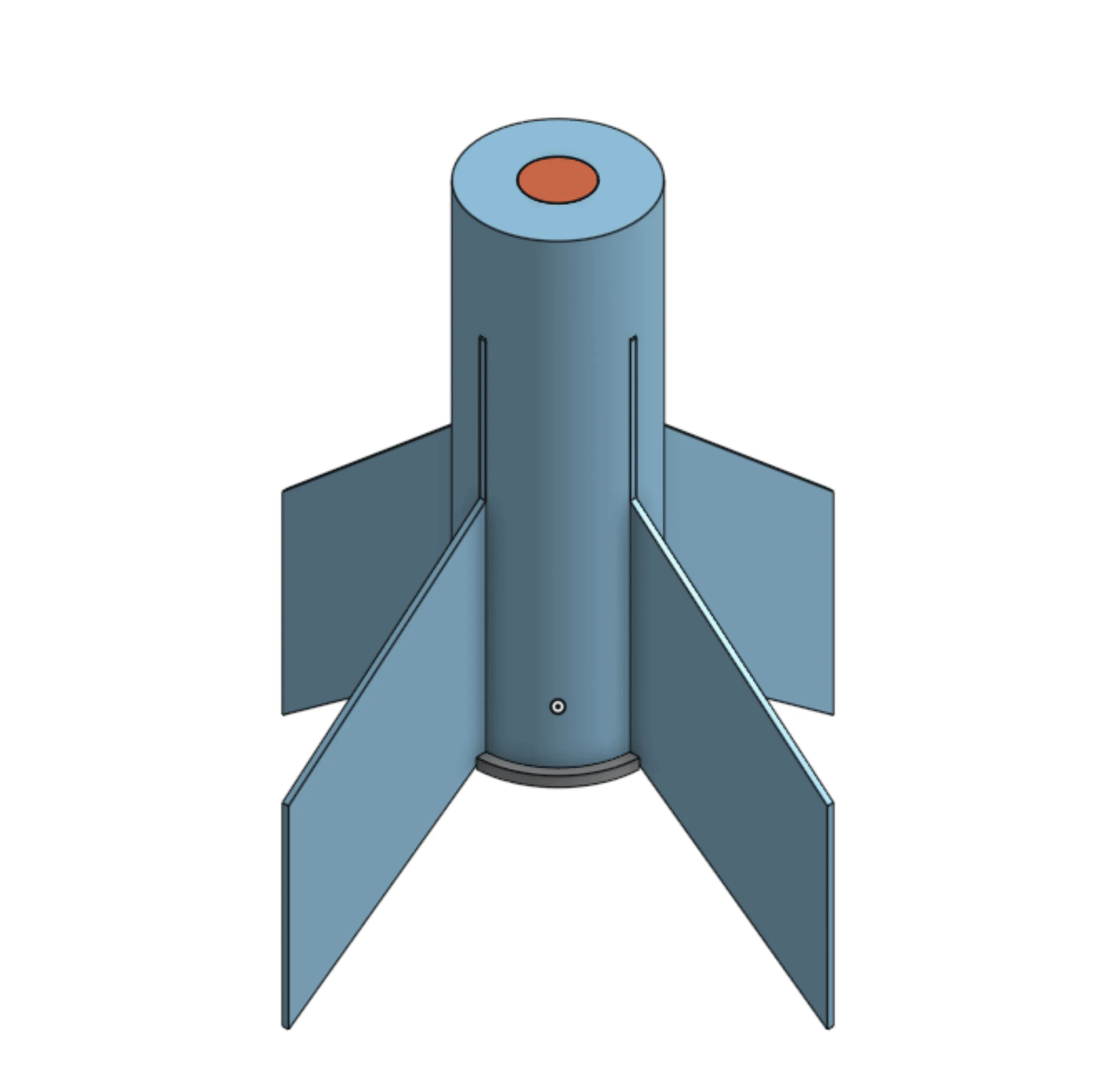
CAD model of the completed 3D-printed
motor mount

Post-launch photo of the motor mount
Furthermore, the motor mount integrated the fin attachments seamlessly. Each of the four designated fin
slits
featured a jigsaw-like slot that not only provided a snug fit for the fins but also secured a significant
portion of each fin within the motor mount. This structural stability ensured the fin assembly remained
intact
during flight, effectively preventing any mid-flight damage resulting from excessive aerodynamic loads or
flutter.
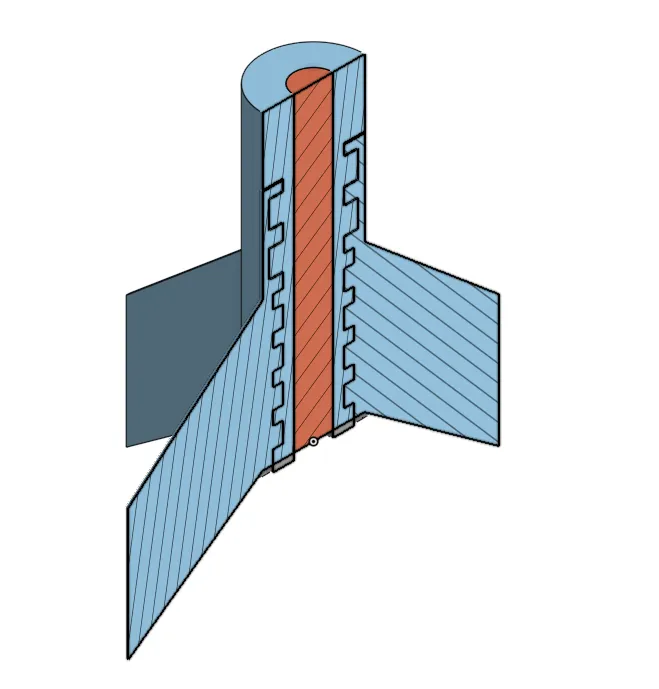
Sectional view of motor mount
It's worth noting that the motor mount incorporated four hollowed spaces intentionally, reducing both the
weight of the assembly and the amount of ABS material used.
Launch Results
The flight proved to be a success. The rocket soared off the launch pad, reaching an altitude of 838.2 meters
(2750 feet),
before descending and landing safely with the parachute. Surprisingly, despite being entirely printed in ABS,
the rocket performed exceptionally well in terms of speed and apogee. For future iterations, I plan to explore
techniques such as variable density printing to reduce infill density in non-critical areas and employ topology
optimization to meet specific criteria for each section of the motor mount.
Overall, the 3D-printed motor mount showcased its potential as a reliable and lightweight component,
demonstrating promising possibilities for optimizing rocket designs and performance.



